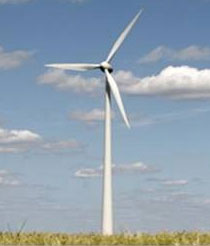University Communications and Marketing
Sustainable energy technician program approved by Board of Regents
May 31, 2010
Contacts:
John Cech, College of Technology, 247-3003
Dan Carter, University Relations, 657-2269
MSU Billings College of Technology to offer certificates and associate degrees in statewide collaborative workforce training effort
MSU BILLINGS NEWS SERVICES — Montanans ready to work in the sustainable energy economy of the future can get a start now through programs approved last week by the Montana Board of Regents.

The regents — the seven-member policymaking board that oversees higher education in Montana — approved a sustainable energy proposal last week jointly submitted by Montana State University Billings and three other colleges in the state. In collaboration with the MSU Great Falls College of Technology, MSU Northern and the Montana Tech College of Technology, the MSU Billings COT will offer Certificate of Applied Science and Associate of Applied Science degrees in a new Sustainable Energy Technician program.
The program will be offered on each of the respective campuses.
The program proposal was the result of a collaborative effort of the four colleges which received a Community Based Job Training Partnership grant from the US Department of Labor. Courses will continue throughout the summer and students in this first cohort can complete an Associate of Applied Science degree by May 2012.
The program’s initial focus is on training in wind technology. As the program evolves, unique coursework related to hydroelectric, internal combustion with alternative fuels and solar energy may be developed, college leaders said.
Students can get a "jump start" in the program by completing necessary general education and related course work this fall semester 2010.
John Cech, dean of the MSU Billings College of Technology said, the COT is committed to providing a trained workforce for Montana as the state expands alternative energy production, especially through wind power and other forms of renewable energy. Cech noted renewable energy and sustainability have become key factors in how the state maneuvers the economic path that lies ahead in the 21st century.
“The world demand for energy over the next 20 years has been forecasted to increase by as much as 50 percent,” Cech said.
He cited recent studies out of Harvard University which ranked Montana as the No. 2 state for wind energy development potential. Cech also noted many states have established Renewable Energy Portfolio Standards (RPS) which target goals for energy produced through alternative energy. For example, by 2020, California’s RPS will require 33 percent of all energy produced in the state come from alternative forms of energy.
“Montana is situated well to help provided alternative energy to states such as California which have high standards,” he said.
Prospective students can call the MSU Billings New Student Services Office at the COT at 247-3005 for more information.
